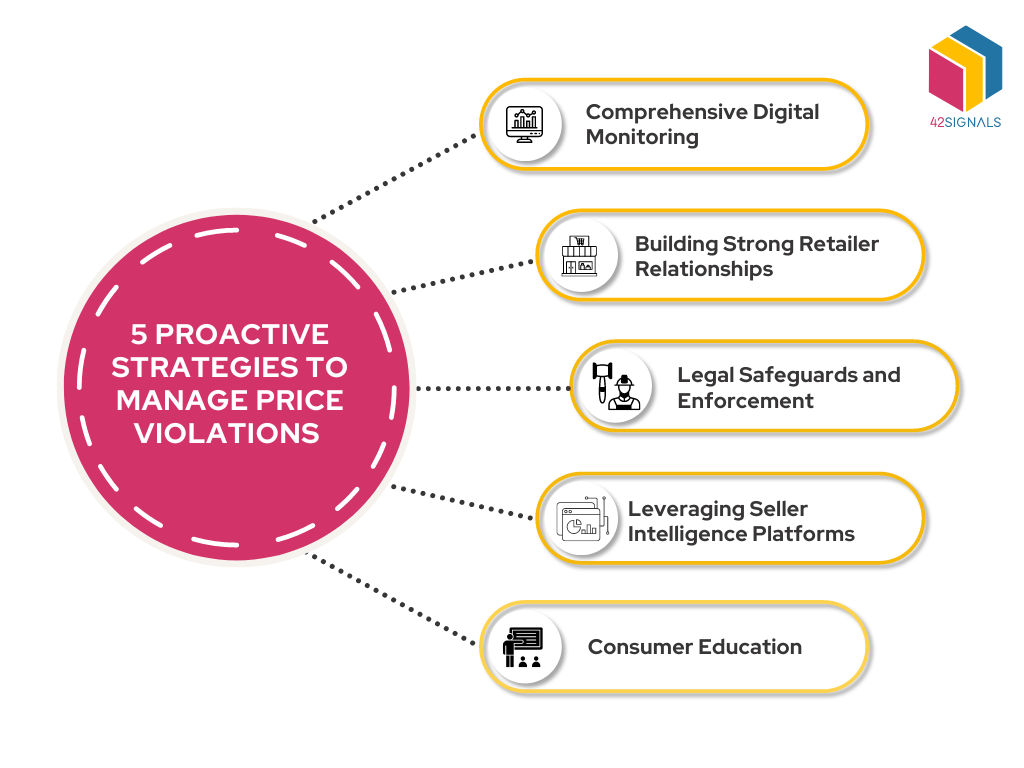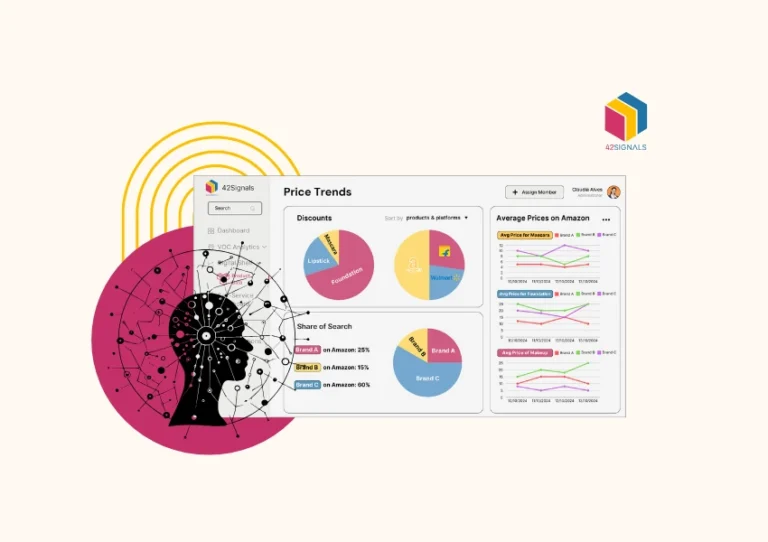Introduction:
In the evolving panorama of e-commerce, maintaining the Minimum Advertised Price (MAP) emerges as a paramount concern for brands. While ensuring that products aren’t undersold is crucial, understanding the intricacies of seller behaviors stands equally vital. Here’s a dive into five strategies to effectively manage these challenges.

1. Comprehensive Digital Monitoring:
In an age where digital transactions are the new normal, the battle for the consumer’s wallet is won or lost on the real-time price display. Every fraction of a second can witness price changes, special offers, and more, that can alter the e-commerce landscape.
Digital Surveillance Tools: The modern digital arena necessitates advanced tools that offer instantaneous alerts and updates. Platforms like 42Signals are at the forefront of this surveillance revolution. With their state-of-the-art framework, brands are equipped to monitor price changes, recognize potential MAP violations, and take corrective actions promptly. This not only helps maintain price violations but also ensures a level playing field for all authorized sellers.
2. Building Strong Retailer Relationships:
Behind every successful brand in the e-commerce space is a robust network of retailers and partners who uphold the brand’s image and pricing policies. The essence of this relationship goes beyond mere transactions; it’s about mutual growth and understanding.
Retailer Training Programs: Regular engagements with retailers can make all the difference. These interactions, be it through workshops, webinars, or one-on-one sessions, can keep retailers updated about a brand’s evolving MAP policies, promotional strategies, and more. It’s an opportunity for brands to clarify any ambiguities, share the rationale behind pricing decisions, and, most importantly, gather feedback from the ground.
3. Legal Safeguards and Enforcement:
In the ever-evolving landscape of e-commerce, relying solely on mutual trust isn’t sufficient. Concrete legal frameworks play an indispensable role in ensuring that MAP agreements are respected and adhered to.
Enforceable MAP Agreements: It’s paramount that brands devise MAP agreements that are transparent, straightforward, and legally binding. These contracts should clearly lay out the expectations, responsibilities, and consequences pertaining to MAP violations. The clarity of such agreements serves as a deterrent for potential violators. Periodic reviews of these agreements ensure they remain relevant amidst changing market dynamics.
4. Leveraging Seller Intelligence Platforms:
E-commerce is vast, and within its expanse, deciphering the myriad behaviors of sellers can be a Herculean task. This is where the role of cutting-edge intelligence platforms comes into play.
Seller Intelligence Software: Platforms like 42Signals, with their advanced algorithms and extensive data repositories, bring clarity to the muddled world of online selling. By providing comprehensive insights into seller activities, price adjustments, and promotional campaigns, these tools empower brands to anticipate market movements and strategize accordingly.
5. Consumer Education:
The end consumer is the cornerstone of any brand’s journey. Educating them on the nuances of MAP and its significance is an often-overlooked yet pivotal strategy in maintaining price integrity.
Consumer Awareness Campaigns: Consumers need to understand why they might see varying prices for the same product across different platforms. By launching awareness campaigns, brands can emphasize the potential risks associated with purchasing from unauthorized sellers or at heavily discounted prices – be it counterfeit products, lack of warranties, or compromised quality. An informed consumer is more likely to make purchasing decisions that align with a brand’s pricing policies, further solidifying the importance of MAP.
Conclusion:
Navigating the complex world of online retail requires more than just a robust product line; it demands a comprehensive strategy to safeguard brand integrity in the face of evolving market dynamics. As brands strive to maintain a consistent image and value, being proactive in managing price violations and unauthorized selling becomes paramount.
Tools like 42Signals, coupled with strong retailer relationships and informed legal frameworks, form the bedrock of a holistic approach toward online brand management. To know more, contact us at sales@42signals.com





